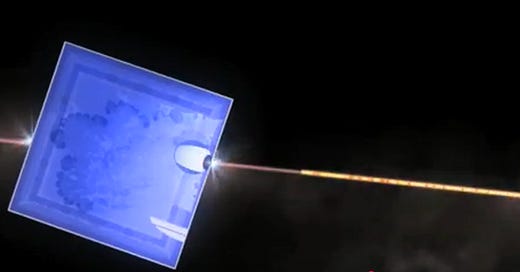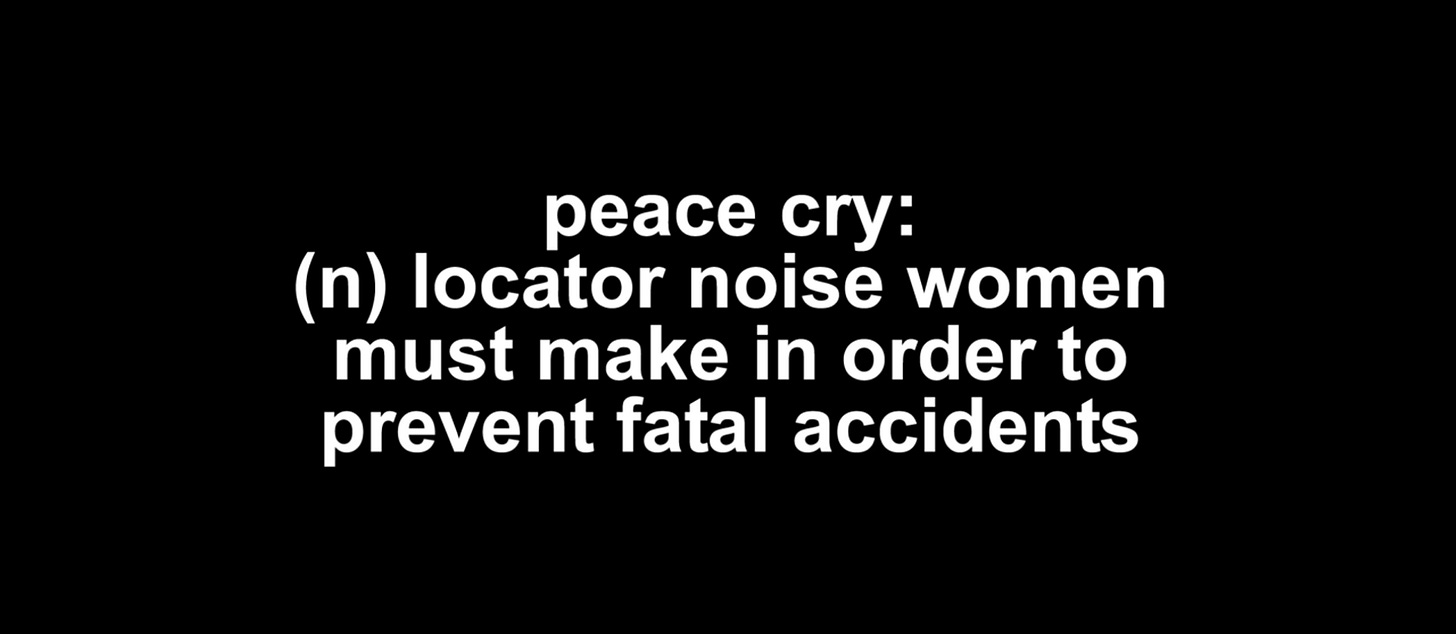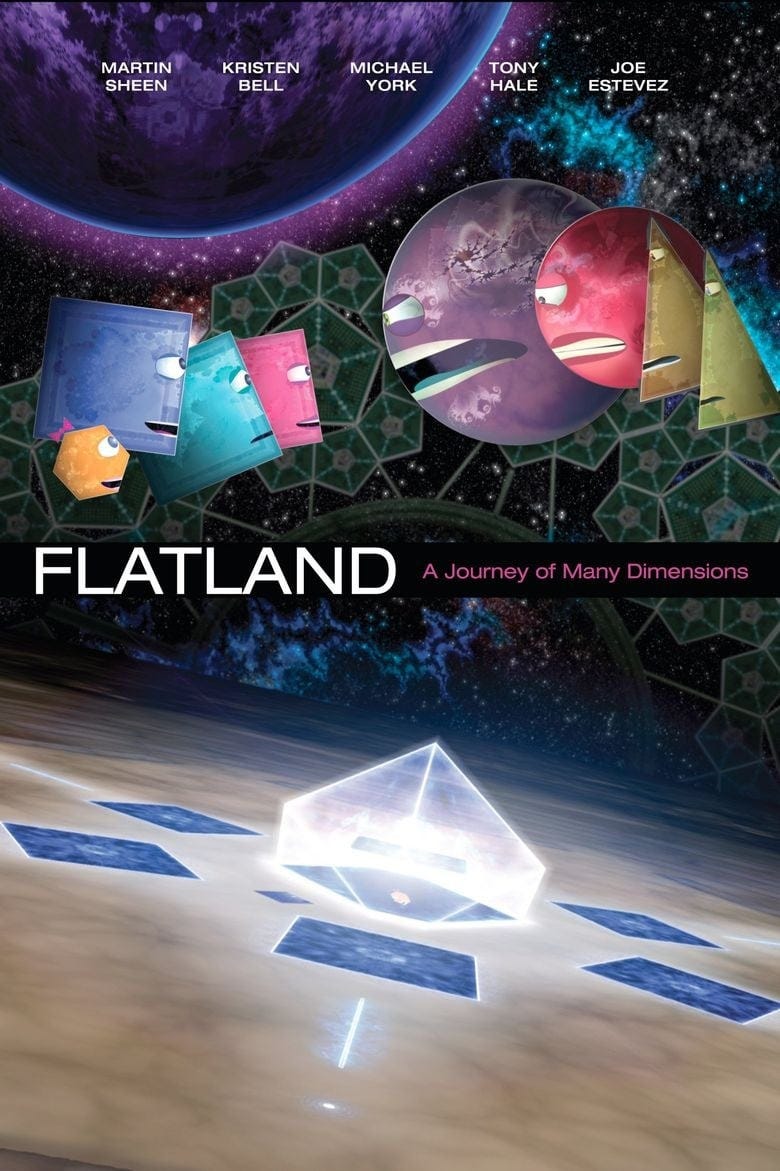Flatland: The Movie and Flatland: The Film (2007)
A Spacelander Learns to See Flat, then 3D Again
Many a middle school math class has been subjected to some form of Flatland movie adaptation. One lazy Friday in 7th grade geometry saw my young self subjected to Jeffrey Travis and Dano Johnson’s Flatland: The Movie. Instead of questioning anything about the film at the time, I put my head down on the desk and took a nap (probably).
(My geometry teacher also one time went on a semi-rant about how gross farts are, because they are clouds of gaseous fecal matter that enter the air and we breathe that in … and that’s inexcusably gross as it is effectively the same as inhaling straight poop … and that’s how pink eye happens, where you get literal gaseous poop in your eyeball … boy, public school: what a trip…)
While containing relatively cutting-edge geometry for the time, the book on which Flatland: The Movie is based is arguably more concerned with Victorian-era class and gender politics than it is about non-Euclidean geometry. Watching the film version in a math class, in retrospect, seems such an odd choice (almost as odd as lecturing a room of 11- and 12-year-olds about noxious farts).
In Edwin Abbott Abbott’s Flatland: A Romance of Many Dimensions, humans are flat shapes in a world with no dimension. Flatlanders perceive everything as lines, as constant and perfect light renders everything on an equal plane. The hierarchy of Flatland’s beings are geometrically based: Women are lines, the lower class are isosceles triangles, the middle class are equilateral triangles, “professional men” are squares or pentagons, and nobility are six-sided and above, with each additional side representing a higher echelon on the chain of social capital. Finally, those polygons with sides so numerous that the shape appears nearly circular are the “Priestly order” of being, the highest and ruling class.
As early as page 8 of the text, where this hierarchy is introduced, it is clear what Abbott is doing. He is infusing social commentary into mathematics, literally flattening culture into abstract shapes to highlight the simple and arbitrary (yet sturdy and meaningful) organization of people in a society. Those born into the upper half of the hierarchy see an increase in the number of their sides, such that they may rise up the ladder generation-to-generation. This is a luxury not usually afforded to the lower classes, in particular those isosceles soldiers and laborers whose appearance (i.e., unequal sides) leaves them socially less-than human (they “can hardly be said to deserve the name of human Figures” [28-9]).
Abbott constructed Flatland by mirroring aspects of the society of classical Greece, a society of which many Victorian thinkers were enamored (2). The resulting satire, William F. Lindgren and Thomas F. Banchoff argue in the Introduction to the 2009 Cambridge edition of the book, is heightened by “making prominent in this imaginary civilization some of the very aspects of classical Greece that its Victorian apologists had rationalized away – for example, slavery, a rigid class system, misogyny, and ancient forms of social Darwinism” (2-3).
To return to math class … how is a middle schooler meant to contend with these heavy socio-political themes, especially when they must first understand how flat objects recognize other flat objects as being different shapes (the shapes accomplish this by touching each other all over)?
The opening sequence of Flatland: The Movie quickly explicates the hierarchy of society (the more lines you have, the better lot you hold in life). Almost immediately, this gets dystopian, as we see a horrifying glimpse at the “social Darwinist” eugenics of it all. The “priests” make and enforce the laws, which include a law in which children born with irregular sides are put to death. In the movie, this is represented by a child being violently ripped from the hands of a shrieking mother and a priest declaring that, by rule of law, the child must be “disposed of.”
Again, picture this playing in a Monday morning math class…
The dystopian aristocracy of Flatland is one where protest against the classist rule of law is actively suppressed. Young shapes are taught to hold their tongue, lest they be punished. Squares work in office cubicles and are encouraged to consider their lowly position a privilege.
To be fair to the math of it all, Flatland: The Movie does explain dimensionality quite succinctly. But the existence of a third dimension being a threat to the power of the ruling class makes the math of secondary importance to the story. Not to mention that the sequence in which the square encounters the “kings” of one- and two-dimensions is the most annoying bit of the whole movie. (With no offense to Tony Hale, but I can’t stand his bit in this).
At only 35 minutes in length, Flatland: The Movie also has little space to contextualize the world of Flatland for its young audience. The first half of the book is centrally focused on detailing the ins and outs of Flatland society (this is the heart of the book’s satire, after all). The movie only has time for passing mentions of the social hierarchy before thrusting the viewer into the multi-dimensional world above Flatland.
Enter Flatland: The Film (2007), another film adaptation of the book that was released in the same year as Flatland: The Movie (confusing, I know). Directed by Ladd Ehlinger,1 Flatland: The Film is a less star-studded affair (Flatland: The Movie stars Martin Sheen and Kristen Bell). It attempts to more faithfully approach the bulk of Abbott’s book, including reference to the controversy of “chromatism” and the gender norms of the book’s satire (e.g., women lines are meant to appear invisible, are relegated mostly to the domestic sphere, and are both feared and demeaned by male shapes).
On the flip side, the film smashes as much of this world-building into a short amount of time. Intertitles flash on screen in desperate attempts to explain concepts, so often and with such rapidity that within the first five minutes of the film anyone who is unfamiliar with the book would likely be entirely lost. And, similarly to the other film, the adaptation barely functions as a tool for childhood learning. Within 10 minutes of the film starting, we are shown a pile of polygonal children being cremated following botched surgeries to fix geometric irregularities. We are then thrown into a “chromatist” revolution of shapes attempting to upend the social hierarchy by coloring their bodies (a later protest ends in slaughter).
None of it is particularly accessible for a classroom setting. And the potential geometry lessons to be made out of Abbott’s source material are lost in translation. At one moment, an intertitle flashes on screen asking the audience to stop paying attention to the mathematics of Flatland entirely. A pithy joke, but one that reduces the very premise of the book into a literal flat line.
It doesn’t help that the voice acting in this version is far inferior to Flatland: The Movie. Line deliveries are occasionally monotone or tonally inconsistent with what is happening in a scene. The voice of one misshapen Flatlander is heinous. The animation is also subpar, with some shots depicting confusing movement or overly static compositions. The editing-in of explanatory intertitles is abrupt and poorly timed. And the overindulgent score includes some music cues that make very little sense. These elements taken together make the film appear like a messy jumble.
The most you can say for Flatland: The Film is that it is much more ambitious than its shorter animated counterpart. The choice to make the sphere character the CEO of a company called Messiah, Inc. is sloppy and heavy-handed. And the camera movements that we get in the three-dimensional world are absolutely nauseating. But the film is attempting a big story about perspective, power, and hierarchy that feels in the spirit of Abbott’s book.
This doesn’t mean that 11-year-olds are going to glean much of meaning from it.
Anyways…I gotta run; it is time for my daily pondering of how perfectly normal our world is … everything is just so perfectly shaped and organized … I couldn’t imagine anything possibly coming in to make me question our current plane of existence … nothing at all … not me waiting here for something to intrude into my normal everyday life and open my eyes to new potential dimensions … it’s definitely not the perfect time for an extra-dimensional being to drop down from the sky and give me a lesson on fourth dimensional geometry … is it really not going to happen? … but I planned this whole “anyways…” bit weeks ago … didn’t you tell me something was going to happ—
Oh, holy Mother Mary and Jesus, there it is! … what are you, you indescribable being from on high? … are you from the fourth … wait, what? … what do you mean, you’re a sphere? … no, we have spheres here in Spaceland … you’re supposed to be, like, a hypercube or something … no, stop telling me about the third dimension; I already know about the third dimension … you were supposed to come in and open my eyes to a perspective that I heretofore had never imagined was possible, not be a sphere … you’ve … no, stop talking; I don’t want to hear about this … no, I already understand what spheres and cubes are … you’ve ruined this perfectly calibrated bit where my brain grows slowly more insane as I consume cursed objects like Flatland … yes, this was a planned bit … this whole thing is planned and is entirely artifice … what do you mean that can’t be … what do you mean, “I’m talking to myself” … what do you mean, “let me rephrase, you aren’t actually talking. This is a textual dramatization of a series of events that have never happened and won’t ever happen” … you’re not making any sense, hypercube! … I mean, sphere … you’re just a sphere … the fourth dimension is a lie … no, stop talking … I’m done with you … this bit is over … I’m so frickin’ mad about this … I tell ya … so frickin’ mad … frickin’ frick …
At Bleeding Eye Cinema, we don’t rate movies based on their artistic merits. We rate them based on strangeness, on a scale from Colin Hanks2 to full-on, run-to-the-eyewash-station Eye Bleeder.
Flatland: The Movie ranks as: Eye Strainer (1/5)
Flatland: The Film ranks as: Grape Jelly Smearer (2/5)
References
Abbott, Edwin A. 2009. Flatland. Edited by William F. Lindgren and Thomas F. Banchoff. Originally published 1884. University of Cambridge Press. https://doi.org/10.1017/CBO9781139194921.
Flatland: The Film is freely available to watch on Ehlinger’s YouTube channel.
Colin Hanks is the the true cinematic touchstone of milquetoast normieness – no offense, Colin.







